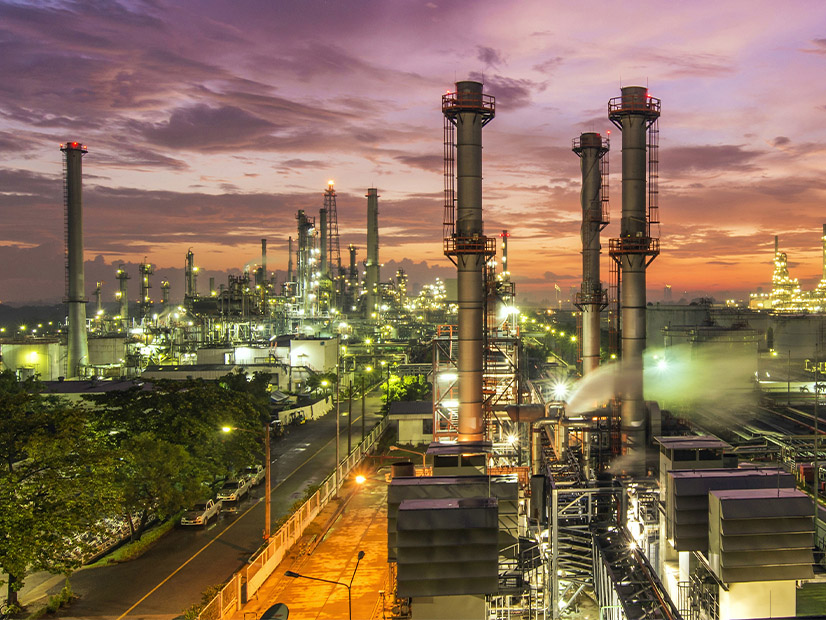The U.S. Department of Energy on March 25 announced $6 billion in funding for 33 projects that are meant to help decarbonize difficult-to-abate, energy-intensive industries.
The money comes from both the Infrastructure Investment and Jobs Act and the Inflation Reduction Act and is meant to accelerate the commercial-scale demonstration of emerging industrial decarbonization technologies that are crucial to meeting the Biden administration’s long-term goals to cut emissions.
“Spurring on the next generation of decarbonization technologies in key industries like steel, paper, concrete and glass will keep America the most competitive nation on Earth,” Energy Secretary Jennifer Granholm said in a statement. “These investments will slash emissions from these difficult-to-decarbonize sectors and ensure American businesses and American workers remain at the forefront of the global economy.”
The projects focus on the highest emitting industries, including aluminum, iron, steel, cement and concrete, chemicals and refining. Altogether, they are expected to avoid about 14 million tons of CO2 each year, which is equivalent to taking 3 million internal combustion cars off the road.
While the electric industry has seen a lot of progress when it comes to getting renewables onto the grid, many of the industries impacted by DOE’s funding announcement need technologies that at least have yet to be proven at scale, Jeffrey Preece, the Electric Power Research Institute’s director of research and development, said in an interview.
“They can’t go and procure alternatives that they have today that meet the low-carbon future while also meeting affordability, reliability and, in these cases, supporting their bottom lines,” Preece said.
Industries like concrete, chemicals and steel making compete globally, and they need economic alternatives available, he added.
Many of the projects will deploy technologies that have never been used domestically and have the potential to be adopted across the entire sector, which multiplies the magnitude of potential emissions cuts, DOE said.
“Some of these technologies are likely to play a role across many different industries,” Preece said. “So, it’s not necessarily creating unique pathways for one industry, but there should be opportunities to share more broadly to help other industries.”
Industry contributes nearly one-third of the country’s emissions, and the federal investment will use more than $20 billion to demonstrate commercial-scale decarbonization needed to move industry toward net-zero emissions, DOE said. The projects will cut emissions at the various sites by an average of 77%.
The sector’s complex decarbonization challenges will require specific and innovative solutions that use multiple pathways, including efficiency, electrification and alternative fuels, and feedstocks, such as clean hydrogen.
DOE is funding seven projects in the chemicals and refining industry, six cement and concrete projects, six iron and steel projects, five aluminum and metals projects, three food and beverage projects, three glass projects, two process heat-focused projects and one in the paper industry.
EPRI has estimated that about 50% of industrial demand could be met with electricity, which would mean significant new load for the power industry, but Preece said some applications work better with other energy sources, and all of those are running on fossil fuels.
“Heavy industry generally requires firm, baseload electricity supply,” Preece said. “And various industries rely on heat sources … that are best served by a fuel.”
While all the industries can benefit from ramping up their efforts around energy efficiency, a lot of work on deploying new alternatives such as hydrogen, carbon capture and storage, and advanced nuclear needs to be done in the next couple of decades.
“If history is our guide, it can take decades to commercialize technologies,” Preece said. “Looking at today’s power generation assets, to your other energy projects, from concept to pilot testing, to first-phase deployment of large-scale, repeatable, replicable commercial deployment, it can take 20-plus years for technology to go from start to fully commercial.”
Many of EPRI’s efforts are focused on trying to speed up that process because avoiding the worst impacts of climate change means significant cuts in CO2 emissions by midcentury, he added.
“The question becomes: How do we do that in a way that doesn’t move one area too quickly and forces an issue in affordability and reliability?” Preece said. “So, our approach to that is working with industrial clusters, hubs, regional groups of industry and power generation, and communities to help assess what technologies might be most impactful for their decarbonization goals and their regional energy supply and use scenario.”
DOE noted that it still has to go through a negotiations process with the projects, and it “may cancel negotiations and rescind the selection for any reason during that time.” Lead applicants can also change during those negotiations. If awarded funds, the projects will go through a phased approach with a number of “go/no-go” decision points where DOE can evaluate the implementation progress.
“Industrial decarbonization is a pathway to creating new jobs, increasing American manufacturing competitiveness, improving local communities and protecting our climate,” Renewable Thermal Collaborative Executive Director Blaine Collison said in a statement. “The Department of Energy’s awards today are important partnerships that will help deliver all these benefits to our people, our economy and our environment. These DOE-industry collaborations will help drive transformation and scale.”
The funding goes hand in hand with other policy measures such as “buy clean” incentives, CeCe Grant, director of the Sierra Club’s Industrial Transformation Campaign, said in a statement.
“We are excited for private industries to take a leading role in cleaning up our industrial sector and will work to ensure that fenceline communities and workers have a real seat at the table to shape the vision for a just transition,” Grant said.



